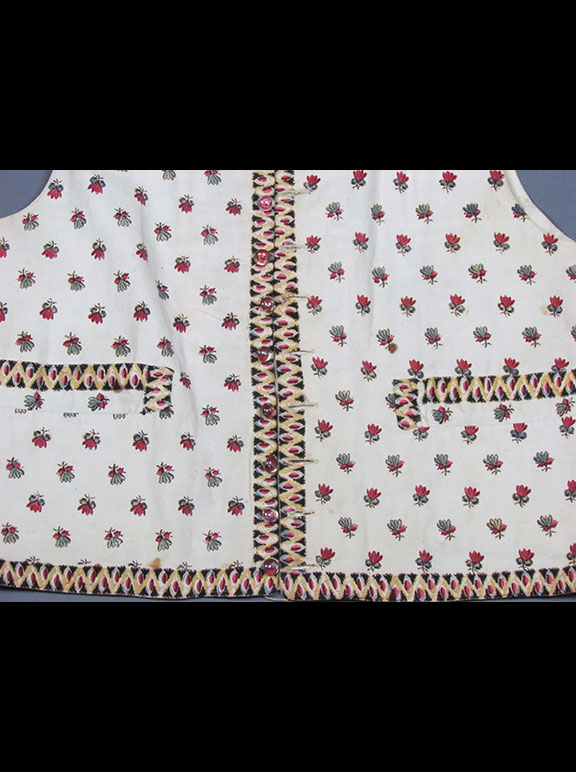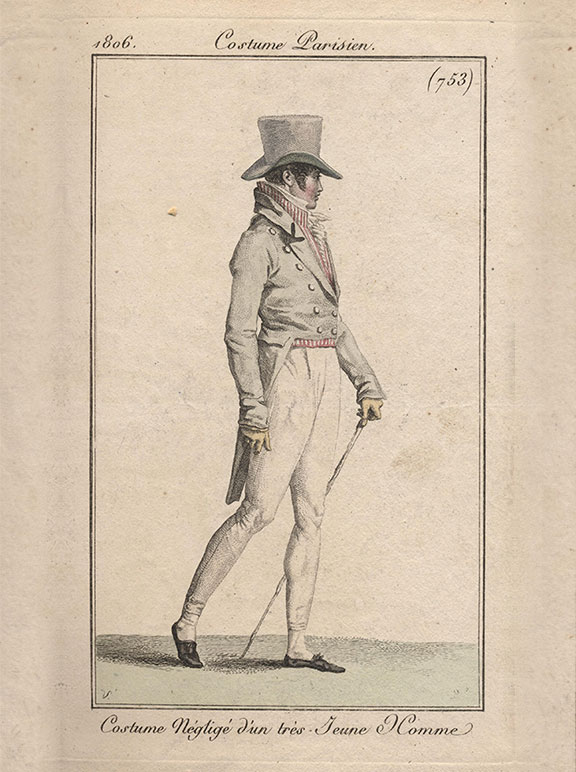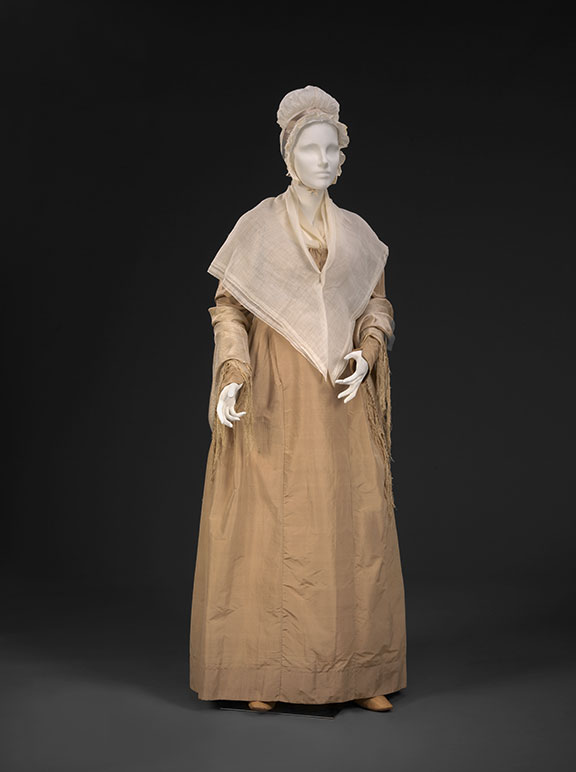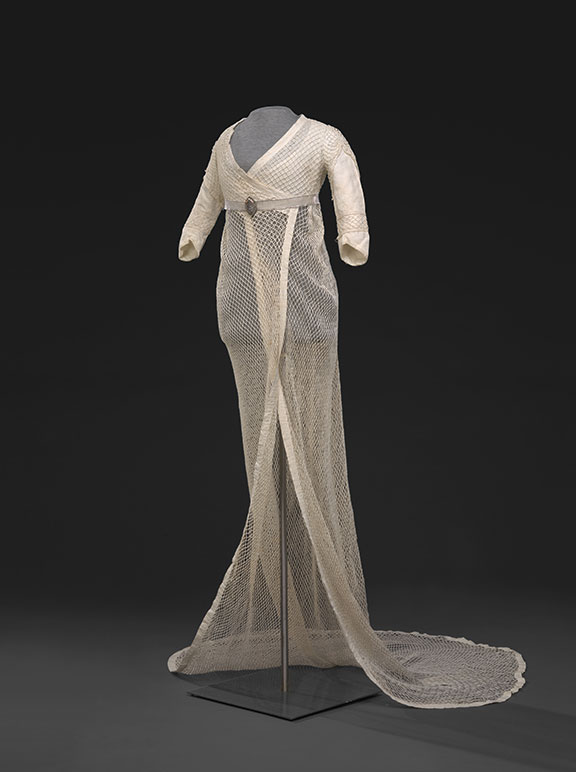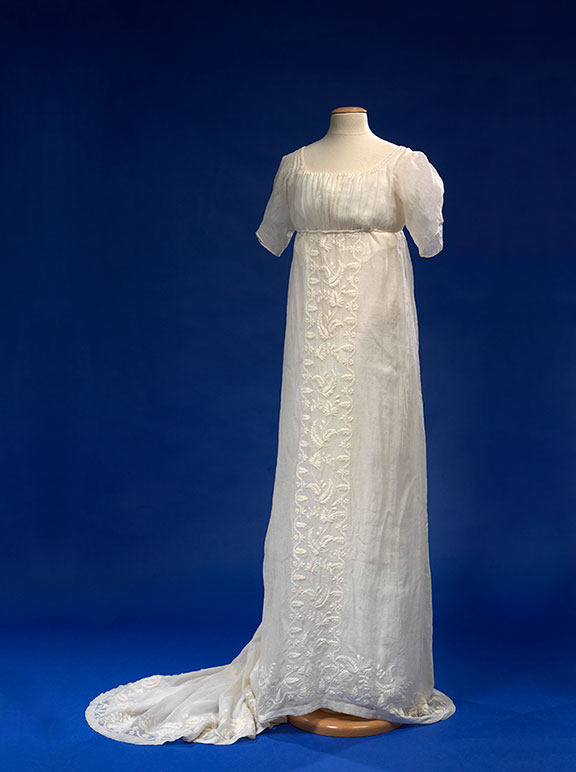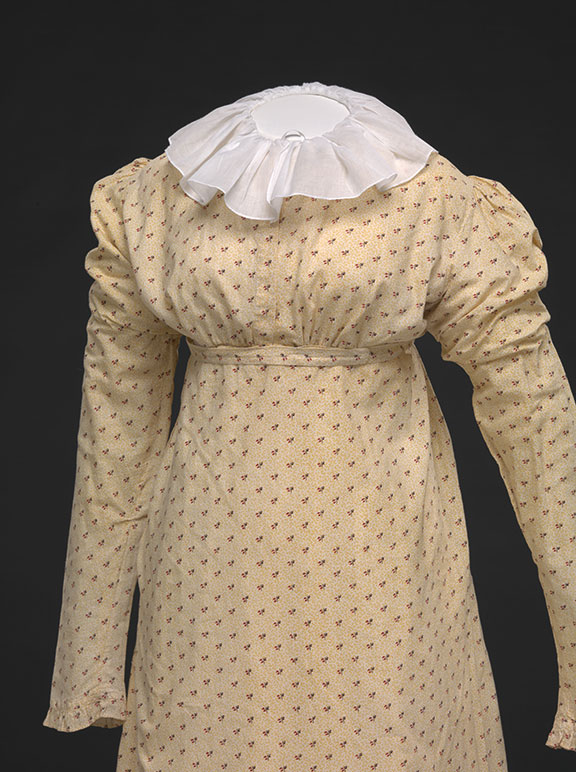Wool Broadcloth Coat and Pantaloons
About 1805-1810
Style: By 1800, the raised waist in coats and cutaway front resulted in a new style of “frock” coat, with the skirts disappearing in front and relegated to “tails” at side and back, revealing the lower part of the waistcoat. Sleeves are long and collars are high, as are waistcoat collars which stand up at chin level.
Ankle-length legwear mostly replaces knee-length breeches. Most men now wear tight-fitting pantaloons (seen here) or looser trousers, with lengths varying between the ankle and several inches above it.
Fabric: The high-quality “drab” wool (incorporating many shades of gray, bordering on a green tone) exhibits skillful tailoring. The waistcoat is printed as a “shape,” that is, with borders pre-printed and the pattern arranged on the fabric ready to be cut and sewn into a waistcoat. It may have been done in India, Europe, or possibly in one of America’s few calico-printing establishments.
Pantaloons were commonly made of knitted fabric so that they would cling to the legs.
Wool coat with silver buttons, probably English wool sewn in the United States, 81, gift of Mr. Tracy Jeffords; cotton waistcoat, about 1800-1810, and reproduction shirt dickey and cravat, private collection; knitted cotton reproduction pantaloons, courtesy of Mike McCarty; metal alloy shoe buckles, late 18th century, 60.63, gift of the DC State Society in honor of Mary Belle Carpenter Clark; reproduction silk stockings and leather shoes, courtesy of Burnley & Trowbridge.
Detail shot of the cotton waistcoat, about 1800-1810.
“Informal outfit for a young man” includes a coat of similar style, snug pantaloons which are probably knitted, and a striped waistcoat. Journal des dames et des modes, 1806. Courtesy Louisa Rauth.


